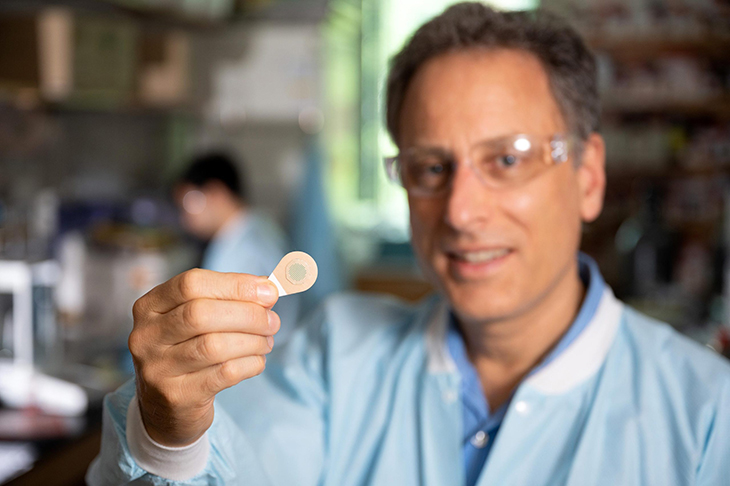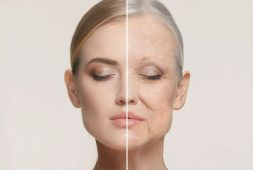
Some people have always dreamed of getting a tattoo but are unable to do so because of fear. They don’t want to experience pain and see blood. So, they resort to stickers or henna just so they get some form of art drawn onto their bodies.
While tattoos are already fairly common and can be seen everywhere, there are still some that don’t have one even if these are no longer considered taboo. Fact is, widespread medical use of tattoos are limited. That’s because the process requires repeated needle injections, which can be uncomfortable or for some, even painful. And if the tattoo artist isn’t careful, these bring risks for bleeding and infection.
However, there is good news for those who want to get a tattoo. Microneedle tattoo patches are there for color images and markings that can be seen once placed under ultraviolet illumination. With this available technology, scientists have managed to develop a press-on application process that allow for easier application for both medical and cosmetic tattoos.
The scientists behind this project have developed a way to make sure the user doesn’t experience these deterrents. They came up with a tattoo patch that comes with microscopic needles that can quickly color to skin without both pain and blood. These are single-use microneedle tattoo patches and they can be applied for both color images and for markings that, as mentioned earlier, can only be seen with ultraviolet illumination. This was according to a study published September 14 in iScience.
“We’ve miniaturized the needle so that it’s painless but still effectively deposits tattoo ink in the skin,” said the senior study author, Mark Prausnitz, PhD. He is of the School of Chemical and Biomolecular Engineering at Georgia Institute of Technology in Atlanta. He explained all these in a statement he recently made.
“This could be a way not only to make medical tattoos more accessible, but also to create new opportunities for cosmetic tattoos because of the ease of administration,” said Dr. Prausnitz. He is the inventor of the patches who cofounded Micron Biomedical. He set out to experiment on them before these could be made available to the market.
Around one in three adults in the U.S. have at least one tattoo. This research published in the December 2019 issue of the Journal of the European Academy of Dermatology and Venereology suggests. As for the younger ones, almost half of adults under 40 years old have a tattoo as well.
The tattoo inks now are basically injected into the skin. While this is common, they’re actually not regulated as medical products by the U.S. Food and Drug Administration. In fact, they go through less-stringent guidelines that have been used for cosmetics. These come with several risks such as infection. This is especially more common for contaminated inks. Aside from that, many have reported to allergic reactions.
It also must be noted that the new study made wasn’t designed to test out the safety or efficacy of these microneedle tattoos. They weren’t conducted to compare the new process with traditional application processes. Rather, the researchers saw this work as a whole different process that’s set to be made available.
Microneedles have already been utilized for a myriad of cosmetic and anti-aging products. Since years back, scientists have also tested these out as a possible way to administer medicines and vaccines without the need for needles, Prausnitz said.
Medical tattoos, on the other hand, are now being used as a coverup for scars, especially for those who go through radiation for cancer treatments. These have also been used by doctors to restore the appearance of nipples when patients undergo breast surgery. The doctors are also looking into the potential of using tattoos in lieu of alert bracelets that are made to identify those who suffer from severe allergies or serious medical conditions such as diabetes or epilepsy.
The traditional tattoos oftentimes require large needles to repeatedly poke and puncture the skin. This is done so that the needle is able to deposit enough ink to create a certain artwork or image. These newest microneedles are also made of tattoo ink that’s placed in a dissolvable casing. This allows the users to create a permanent image once they’re pressed onto an area of the skin.
To use the microneedle tattoos, scientists designed small molds with the microneedles that have been arranged in a certain pattern to form different images. After which, they filled the molds with tattoo ink and also added a backing for the patch. The use of these microneedles is actually quite simple and quick. All you need to do is press the patch onto the skin for a mere few minutes, just enough to allow these microneedles to dissolve and release the ink.
In the early stages of this new method, the made were able to last one year. This meant that this new approach has the ability to create a permanent image. This was the same for traditional tattoo ink and invisible inks that come out when placed under ultraviolet light or higher temperatures. This method may also give some privacy to people who want the images be made visible only under certain instances.
There’s also a chance that microneedle tattoos may be utilized as temporary ink for short-term medical needs. For instance, this may be used to identify the correct arm or leg for a procedure. Or, this could be applied to cosmetic images that users don’t want have their entire lives. Animals can benefit from this as well. They may be recipients of microneedle patch tattoos rather than having their own ears clipped or tagged for tracking purposes. There’s just so much potential for microneedling at this point.
“The goal isn’t to replace all tattoos, which are often works of beauty created by tattoo artists,” Prausnitz explained. “Our goal is to create new opportunities for patients, pets, and people who want a painless tattoo that can be easily administered.”



